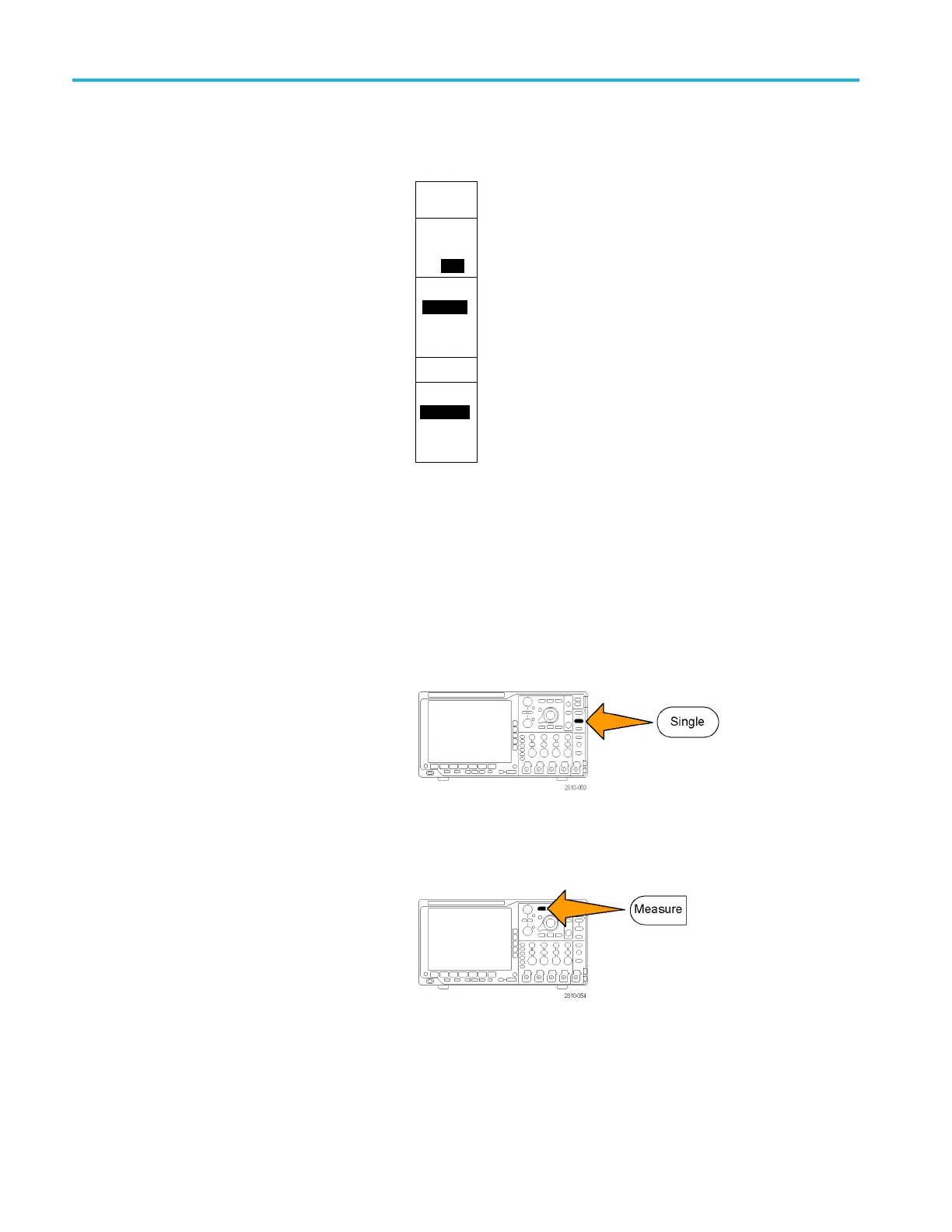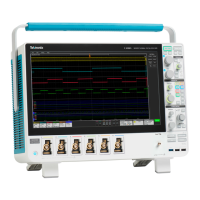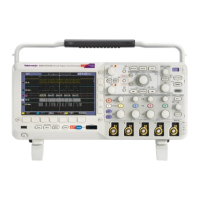Application Exa
mples
4. Push More repea
tedly until you select
Reference Levels from the popup menu.
Reference
Levels
5. Push Set Levels in to s e lect units.
Set Levels
in
%|
Units
6. Push High Re
f and turn multipurpose knob
a to enter 2.00 V. If needed, push Fine to
change the sensitivity of the multipurpose
knob.
High Ref
(a) 2.00 V
Mid Ref
7. Push Low Ref and turn multipurpose knob
a to enter
800 mV. If needed, push Fine to
change the sensitivity of the multipurpose
knob.
Low Ref
(a) 800 mV
Rise time is typically measured between the 10% and 90% amplitude levels of a signal. These are the default reference
levels that the oscilloscope uses for rise time measurements. However, in this ex ample, you need to measure the time that
the sign
al takes to pass between the 0.8 V and 2.0 V levels.
You can c
ustomize the rise time measurement to measure the signal transition time between any two reference levels. You
can set each of these reference levels to a specific percent of the signal amplitude or to a specific level in vertical units
(such as volts or amperes).
Measuring specific events. Next you want to see the pulses in the incoming digital signal, but the pulse widths vary so it is
hard to establish a stable trigger. To look at a snapshot of the digital signal, do this step:
1. Push Single to capture a single acquisition.
This assumes that the oscilloscope w ill
trigg
er with the current settings.
Now you want to measure the width of each
disp
layed pulse. You can use measurement
gating to select a specific pulse to measure.
To measure the second pulse:
2. Pus
h Measure.
168 MSO4000B and DPO 4000B Series Oscilloscopes User Manual
